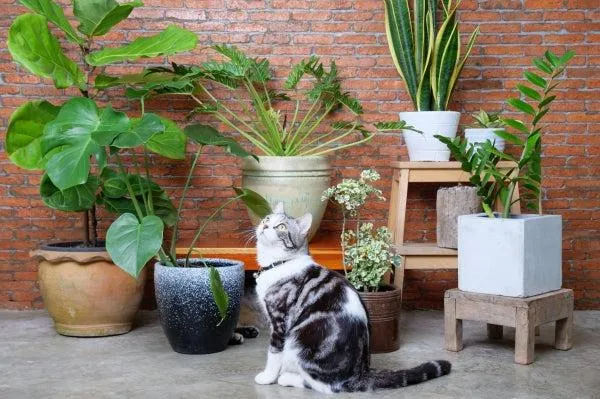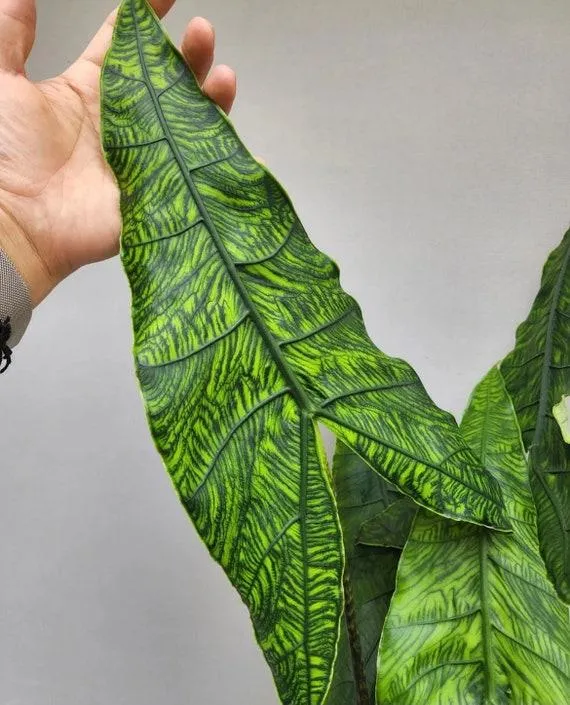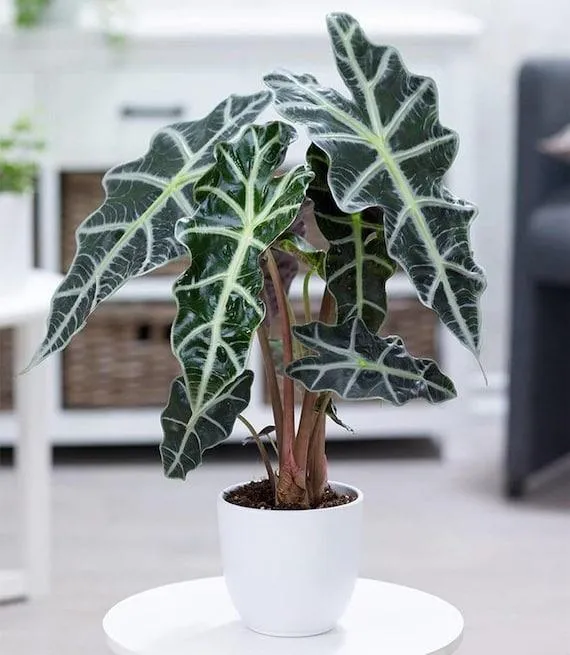Are Alocasias Safe for Dogs?
An alocasia is a type of tropical plant that is becoming increasingly popular as a houseplant. However, many dog owners wonder if these plants are safe to have around their furry friends. In this article, I will explore the questions surrounding alocasias and dogs to help you determine if this plant is a good fit for your home.
Are Alocasias Toxic to Dogs?
The short answer is that alocasias can be toxic to dogs if eaten in large quantities. All parts of the alocasia plant, including the leaves, stems, and bulbs, contain calcium oxalate crystals. These crystals can cause painful irritation and swelling in the mouth and throat if a dog chews on the plant. They may also vomit or experience diarrhea.
From my experience as a veterinarian, calcium oxalate poisoning is one of the most common plant toxicities I see. The crystals act like little needles that puncture tissue. While small amounts may only cause minor discomfort, eating a large section of plant carries a risk of swelling airways or potentially fatal kidney damage.
What Are the Signs of Alocasia Toxicity in Dogs?
If your dog ingests an alocasia, keep an eye out for the following symptoms:
- Drooling and lip smacking from oral irritation
- Swelling of the mouth and tongue
- Vomiting
- Diarrhea
- Lethargy
- Loss of appetite
- Difficulty breathing (only with large ingestions)
You’ll want to contact your vet right away if you see any of these signs after your dog was around an alocasia plant. Prompt medical treatment can help flush the crystals from the body before organ damage occurs.

Are Some Dogs More at Risk?
Puppies and older dogs tend to be moresusceptible to plant toxicity due to their size and metabolism. Curious chewers like Labs and spaniels may also face greater risk if they investigate houseplants with their mouths.
I’ve seen situations where an playful pup managed to knock over and eat from a potted plant before their owners could intervene. So energetic or mischievous dogs may benefit from extra monitoring around potentially toxic species.
Can I Reduce The Risks of Alocasia Around Dogs?
Luckily, there are steps you can take to help prevent alocasia poisoning in dogs while still enjoying these plants yourself:
- Keep all alocasia plants out of reach by placing them high on shelves or hanging baskets.
- Consider potting the plant in heavy ceramic containers that won’t tip over easily.
- Trim any drooping or dangling leaves that a dog could chew on.
- Supervise playtime or interactions if dogs are around plants.
- Instruct children not to allow dogs to eat any part of an alocasia.
- Remove fallen leaves, pieces, or chewed sections immediately.
With care and caution, it is possible to peacefully coexist with alocasias and dogs. But certain varieties may never be 100% pet-proof. It’s best to choose non-toxic decor if you have an avid plant exploring pup!
What To Do If Your Dog Eats An Alocasia
Even with preventative measures, accidents can happen. Here are steps to take immediately if your dog ingests part of an alocasia plant:

- Call your vet or the pet poison control hotline as soon as possible.
- Gently rinse the dog’s mouth with water to remove any remaining plant debris.
- Do not induce vomiting unless instructed by a professional.
- Begin monitoring for symptoms like those previously mentioned.
- Be ready to transport your dog to the vet promptly for medical treatment.
Timely veterinary care is important, as symptoms may not appear right away. But the good news is many cases of alocasia ingestion resolve without serious incident if help is sought quickly.
The Bottom Line On Alocasias And Dogs
In summary, while all parts of an alocasia plant contain irritating calcium oxalate crystals, dog exposures are usually not life-threatening – especially if managed properly. By taking precautions to keep the plant well out of reach, providing supervision, and seeking vet help promptly if needed, it is basically possible to safely have alocasias in homes with dogs.
However, some risk remains for puppies, senior dogs, or avid chewers due to potential toxicity. So it’s up to each owner’s judgment on whether these plants are worth it for their specific pet family members. Overall though, with care, communication and common sense most dog/alocasia cohabitation situations can work out ok!
I hope this info helps you determine if an alocasia is a good fit for your doggy household. Please reach out if you have any other questions – I’m always here to help keep pets healthy and happy. Wishing you and your furry friends the very best!
Is Your Alocasia Safe for Dogs?
| Plant Part | Toxicity Level |
|---|---|
| Leaves | Moderate |
| Stems | Low |
| Bulbs | High |
| Symptoms of Ingestion | Vomiting, diarrhea, depression |
| First Aid | Induce vomiting, contact vet immediately |
| Dog Safety | Keep away from reach, monitor interactions |
FAQ
-
Can my dog eat alocasia plants?
Basically, alocasia plants are not safe for dogs to eat or chew on. Most parts of the plant are highly poisonous to dogs. The toxins in alocasia can cause vomiting, drooling, and stomach upset if consumed.

-
What happens if my dog eats an alocasia plant?
If your dog does eat part of an alocasia plant, you’ll want to contact your vet right away. The dog may experience nausea, excessive salivation, or diarrhea. In severe cases, the toxins could potentially harm the dog’s kidneys or nervous system. It’s best to keep alocasia plants out of reach of curious canines.
-
Are all parts of the alocasia plant poisonous?
While the stems, leaves, roots, and flowers contain toxic compounds, some people claim the berries are safe to eat. However, it’s kind of difficult to say for certain without more research. Unless you’re totally positive which parts are non-toxic, I wouldn’t risk letting dogs nibble on any alocasia plant.
-
How can I prevent my dog from chewing alocasia?
Keeping alocasia plants high up or in another room away from pets is the best way to basically prevent access. You can also try spraying bitter apple spray on the plant to make it unappealing to chew. Training your dog not to mess with houseplants is key as well. But is that fair to expect from a curious pup?
-
Are there any safe houseplants for dogs?
Luckily, there are lots of non-toxic houseplants that are even supposedly good for dogs. Some reported dog-safe options include peace lilies, English ivy, bamboo palm, and zzzzzzzzs. Always check an exhaustive list of toxic and non-toxic plants, since some may cause mild stomach upset in some dogs.
On the other hand, while alocasia is poisonous, the stunning colorful leaves are gorgeous! Maybe there are ways to still enjoy the plant’s beauty while keeping pupper safe, such as displaying it high out of reach. What House and Garden magazine says sounds reasonable, but I’d love to hear what my readers think. Are there any more creative solutions to allow both gardens and good boys?

